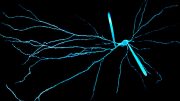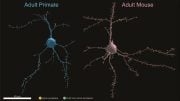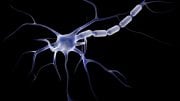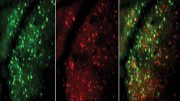
The researchers have learned about species-specific differences in neuron architecture.
There are differences in the neuronal architecture of primates and non-primates.
A multinational research team has now been able to increase their understanding of species-specific variations in the architecture of cortical neurons thanks to high-resolution microscopy.
Researchers from the Developmental Neurobiology research group at Ruhr-Universität Bochum, led by Professor Petra Wahle, have demonstrated that primates and non-primates differ in an important aspect of their architecture: the origin of the axon, which is the process responsible for the transmission of electrical signals known as action potentials. The results were recently published in the journal eLife.

The researchers worked exclusively with archived tissues and specimens, including specimens that have been and continue to be used for decades for the education of students. Credit: RUB, Kramer
Axons can emerge from dendrites
Until now, it was considered textbook knowledge that the axon always, with few exceptions, arises from the cell body of a neuron.
However, it may also originate from dendrites, which serve to collect and integrate the incoming synaptic signals. This phenomenon has been termed “axon-carrying dendrites”.
Various mammalian species and high-resolution microscopy reveal the variable axonal origin
“A unique aspect of the project is that the team worked with archived tissue and slide preparations, which included material that has been used for years to teach students,” explains Petra Wahle.
A variety of animals, including rodents (mouse, rat), ungulates (pig), carnivores (cat, ferret), and macaques and humans of the zoological order primates, were also researched. The scientists came to the conclusion that there is a species difference between non-primates and primates via the use of five distinct staining techniques and evaluation of more than 34,000 neurons.
There are noticeably fewer axon-carrying dendrites on excitatory pyramidal neurons in the outer layers II and III of the cerebral cortex of primates than on excitatory pyramidal neurons in non-primates. Additionally, for inhibitory interneurons, substantial variations in the percentage of axon-carrying dendrite cells were discovered between the cat and human species.
No quantitative differences were observed when comparing macaque cortical areas with primary sensory and higher brain functions. High-resolution microscopy was of particular importance, as Petra Wahle describes: “This allowed the detection of axonal origins accurately tracked at the micrometer level, which is sometimes not so easy with conventional light microscopy.”
Evolutionary advantage still enigmatic
Little is known about the function of axon-carrying dendrites. Usually, a neuron integrates excitatory inputs arriving at the dendrites with inhibitory inputs, a process termed somatodendritic integration. The neuron then decides if inputs are strong enough and important enough to be transmitted via action potentials to other neurons and brain areas.
Axon-carrying dendrites are considered privileged because depolarizing inputs to these dendrites are able to evoke action potentials directly without the involvement of somatic integration and somatic inhibition. Why this species difference has evolved, and the potential advantage it may have for the neocortical information processing in primates, is as yet unknown.
Reference: “Neocortical pyramidal neurons with axons emerging from dendrites are frequent in non-primates, but rare in monkey and human” by Petra Wahle, Eric Sobierajski, Ina Gasterstädt, Nadja Lehmann, Susanna Weber, Joachim HR Lübke, Maren Engelhardt, Claudia Distler and Gundela Meyer, 20 April 2022, eLife.
DOI: 10.7554/eLife.76101
The study was funded by the German Research Foundation.









Be the first to comment on "Scientists Find a Key Brain Difference Between Primates and Other Animals"